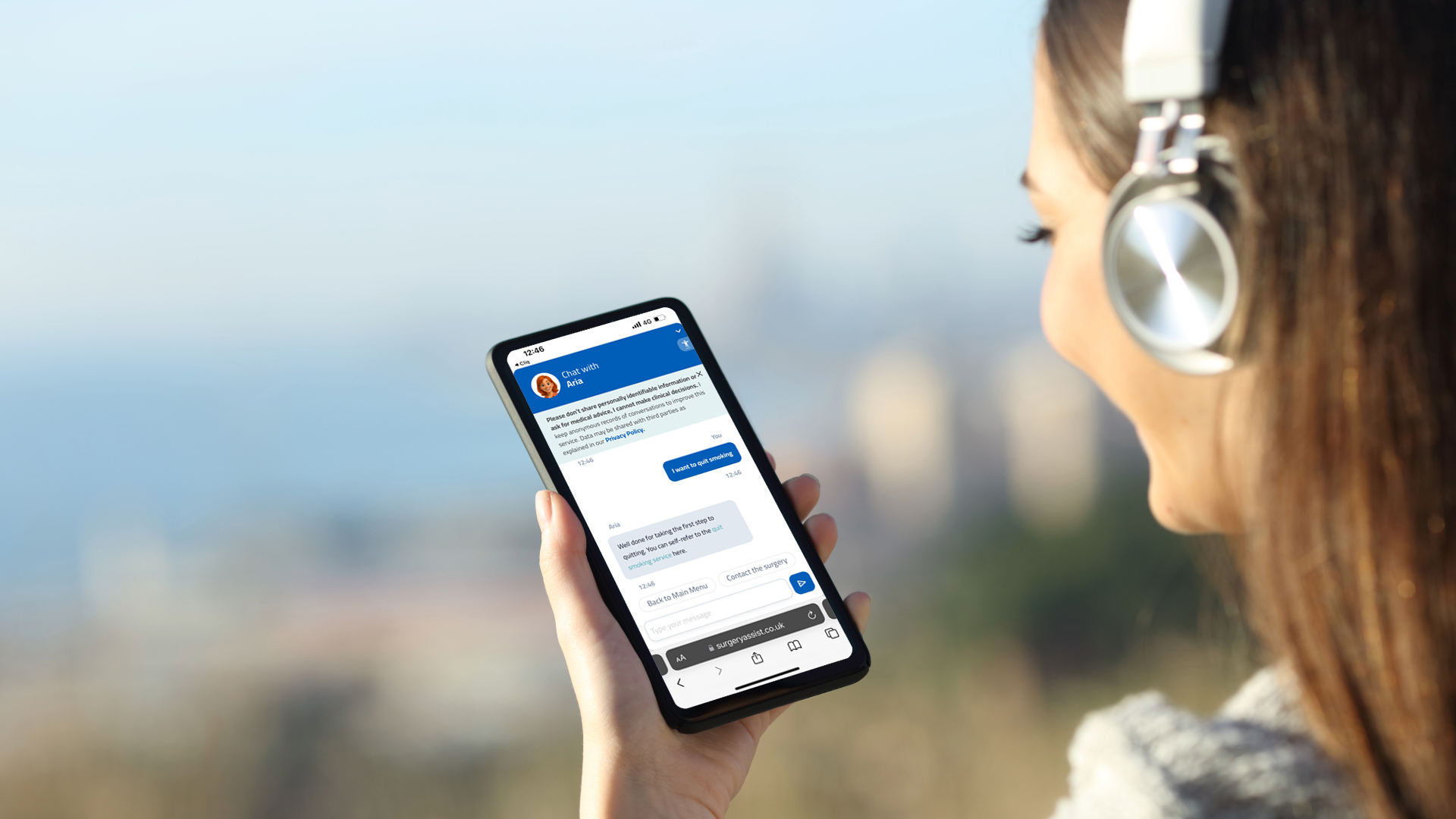Appointment backlogs are stretching GP surgeries beyond capacity. Demand is up, staff numbers are under pressure and the result is a growing imbalance between the care patients need and the time practices have to give.
As part of GP contract changes from October 2025, GP surgeries must keep their online consultation (OC) tools open during core hours. The aim here is better access but without smart patient navigation in place, OC tools can simply shift admin workload from phones to forms, creating more work behind the scenes.
At X-on Health, we know that to truly tackle backlogs, GP surgeries need tools that support intelligent scheduling, not just faster form-filling. That means embedding the right tools into core workflows to streamline decisions, free up staff time and ensure patients get care in the right place at the right time.
Let’s explore how practices can better manage demand at the front door with AI-powered, smart patient navigation solutions like Surgery Assist working alongside your current setup.
The limits of OC as a standalone triage tool
OC platforms were introduced to improve access and help patients self-serve where possible. In theory, they support demand management by reducing phone traffic and giving practices more control over how they respond to queries.
But in practice, many teams are finding the opposite. Patients submit queries online, but most still need to be triaged manually by clinical or admin staff. Instead of cutting down the work, it simply moves it from the phones to the inbox, creating a new pile of tasks for overstretched teams.
When OC is seen as the first step, the risk is that every patient interaction becomes a ‘ticket’ to be processed, rather than a pathway to be resolved. Practices then face bottlenecks in decision-making and limited capacity for more complex or urgent needs.
Putting smart patient navigation before the digital front door
The answer isn’t to remove OC tools. Instead, to position them as part of a smarter, joined-up process. This starts with smart patient navigation technology that can interact with the patient, understand their needs and guide them to the most appropriate next step. AI-powered tools like Surgery Assist do exactly this. Using a locally trained chatbot, it can gather context, ask relevant follow-up questions and adapt based on responses or symptoms—something a standard OC form can’t do. Crucially, it is available 24/7 to signpost patients to the most appropriate service. If a GP appointment is required, Surgery Assist hands off clean, structured information to the practice OC tool offering.
This simple switch to chatbot first, OC second, changes the dynamic. It filters demand before it hits the practice. It enables practices to make fast, informed decisions about how to allocate their time and it improves patient experience by removing the guesswork around what’s going to happen next.
How smart patient navigation streamlines workflows and outcomes
When triage sits outside of core workflows, it’s harder to manage time, capacity and risk. Admin teams often need to interpret long OC submissions, forward messages manually and contact patients for further clarification. All of this introduces more friction, increases SMS costs and ultimately delays care.
With smart patient navigation tools like Surgery Assist embedded in the practice workflow, the process is much more efficient. Patients are met with a friendly digital assistant that listens, gathers and assesses. The system then presents relevant information in a clear format for action, whether that’s booking an appointment, issuing a prescription or signposting to the most relevant care.
This speeds up decision-making and makes it easier to match capacity with need. Practices can adjust appointment types and schedules based on real-time data about incoming queries. They can set up smart routing rules for certain conditions or patient groups and they can use the insights generated to plan staffing around demand patterns.
It’s not about removing the human touch, it’s about making space for it where it matters most.
Supporting NHS digital access goals through smart patient navigation
While the NHS is pushing for a digital-first, sustainable model of care, digital-first doesn’t mean digital-only. The goal is to make it easier for patients to get the right help at the right time, whatever channel they use.
That’s why smart patient navigation plays a vital role. It provides a clear entry point for patients, supports decision-making at scale, and ensures that staff time is focused on care, not admin. It also supports the long-term vision of a more connected, data-driven NHS. When tools like Surgery Assist integrate with other platforms, such as Cloud-based telephony systems like Surgery Connect, they begin to unlock a truly connected digital front door.
Smarter scheduling for more sustainable care delivery
As GP surgeries continue to adapt to rising demand and resource constraints, smarter scheduling must become the norm. That means moving away from fragmented digital tools that shuffle workload from one area to another.
Instead, practices need solutions that can anticipate, guide and resolve patient needs before they become delays. Smart patient navigation, driven by tools like Surgery Assist, is central to this. By embedding it into everyday operations, practices can unlock faster care, reduce appointment pressure and create more space to focus on care.
Ready to simplify navigation and reduce appointment backlogs?

